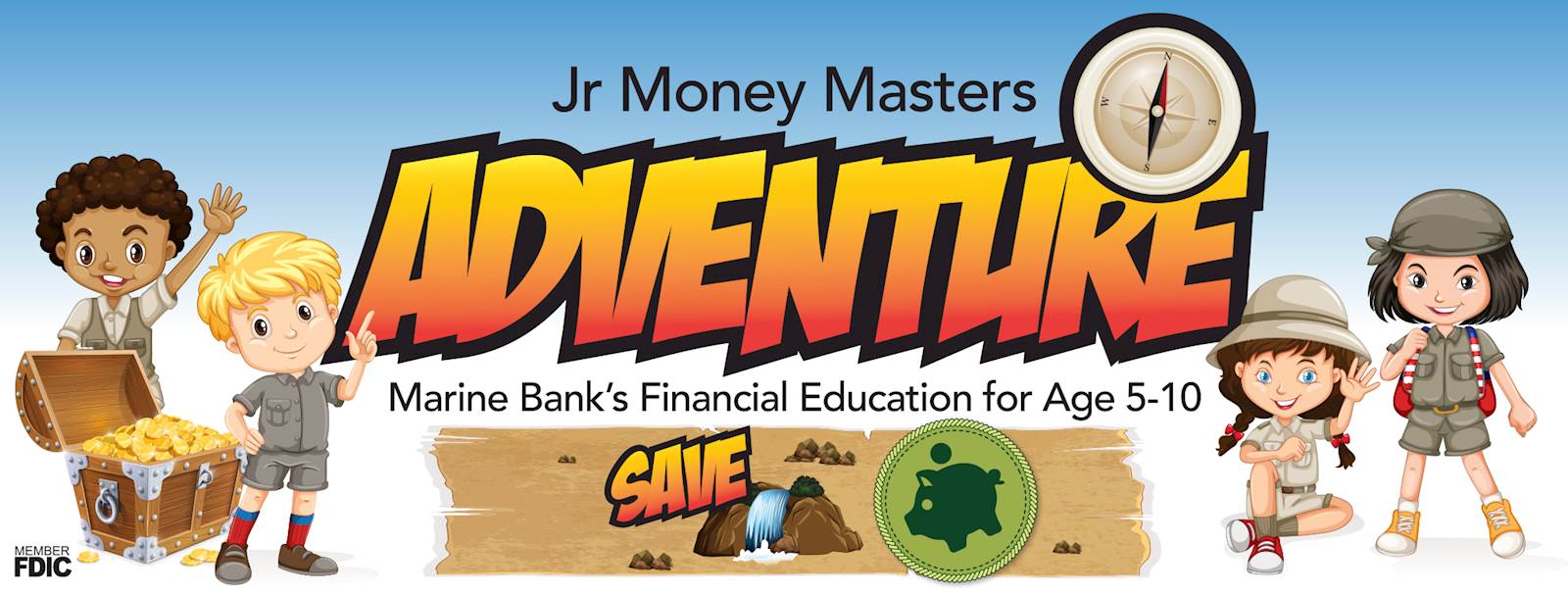4/18/2019
Sarah McCandless

We all know that teaching kids to save money is important. If you’re feeling a little overwhelmed and wondering just how to accomplish that, don’t worry! We’ve put together a few tips as part of our Junior Money Masters adventure to help you start the conversation and show the kids in your life how to start saving.
Help Them Find a Safe Spot to Save Their Money
It doesn’t matter whether it’s in a piggy bank, shoe box, coffee mug, or a plastic bag. The important piece is that your child has a visible place to keep their spare change and/or bills. Letting them be involved in picking out the bank and having a goal in mind also increases the chance that they will want to put money into it. Some kids get a thrill on seeing their money grow through a clear container. Others may find it easier to resist the temptation when the bank isn’t see-through.
Play Games
There are plenty of kids’ games to reinforce financial concepts to children. Monopoly Jr. is designed for children over the age of 5 and is a great way to reinforce not only math and counting skills, but the game also teaches players to manage their money wisely; if you want to buy a property (like the arcade or the candy store, for example) you have to pay for it. If you don’t have enough money, you can’t buy the property. Other family-friendly games to start the conversation include Payday and The Game of Life. I also recommend apps like Savings Spree and Green$treets that combine fun and finance into a kid-friendly format.
Use the 3-Jar Method
Jay Cook, VP Commercial Lender, taught his kids the important of saving using the traditional method of using 3 different jars for earning, saving, and spending. Read more about this method here in Jay’s blog.
Pay Them Interest
Even if you’re not ready to open up a bank account for your child, you can still teach kids about the concept of interest and the benefits of letting money sit in a savings account. It can be as simple as having them count their savings monthly, and then adding a few extra cents (or dollars) to their pile. Each month, you can pay them interest that is proportional to the amount of money they saved in that month.
Let them make Spending Mistakes
Yep, you read that correctly. If you’re wondering why I’m advocating for making mistakes, it’s because the damage from a $5 spending mistake during childhood is nothing in comparison to a $500 or $5,000 spending mistake in adulthood. If your child receives birthday money or an allowance, let them bring it to the store and purchase whatever they’d like (within reason, of course!). Valuable lessons can be learned from the $2 toy that breaks after 30 seconds of use. The lesson, here? Saving your money is worth it when you can buy a $20 toy, or save up $200 to use on the vacation of a lifetime. When a child has to use their own money, they will think more carefully about how they spend it.
Whether you have a three year old or a thirteen year old, there are a number of different ways to teach the kids in your life how to save money and perhaps most importantly, why they should save money. At Marine Bank, we’re with you every step of the way! Check out our Pinterest Boards for more ideas!